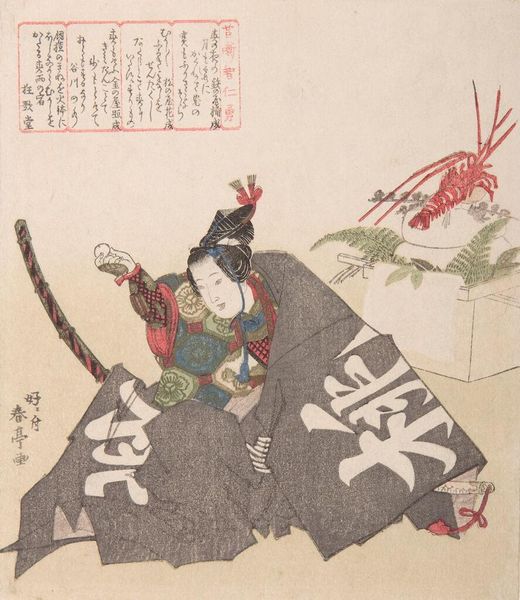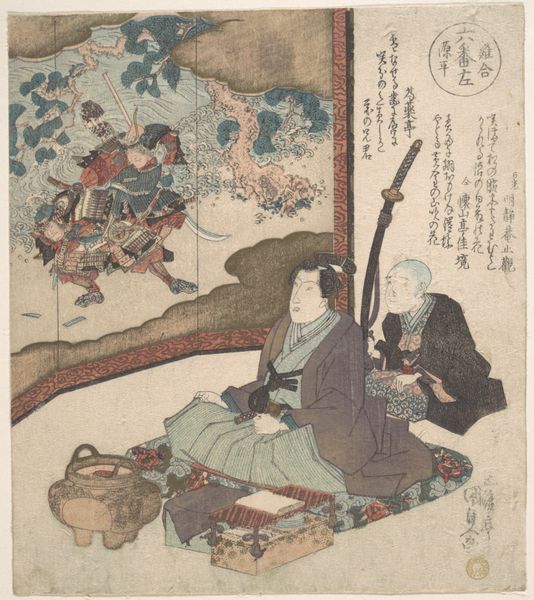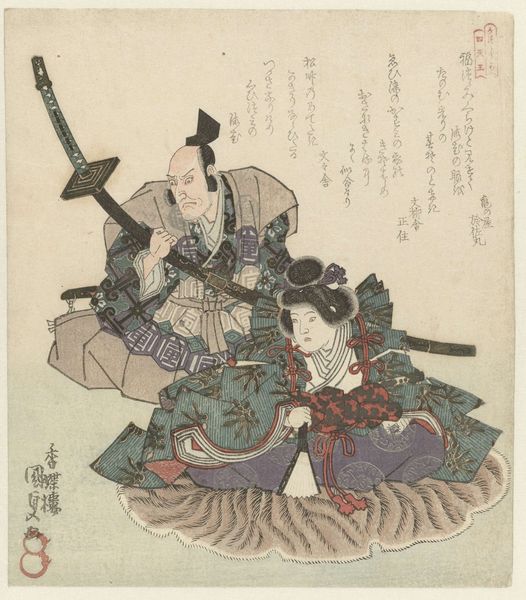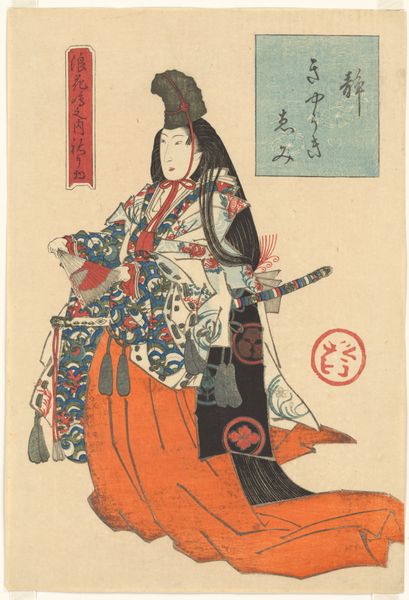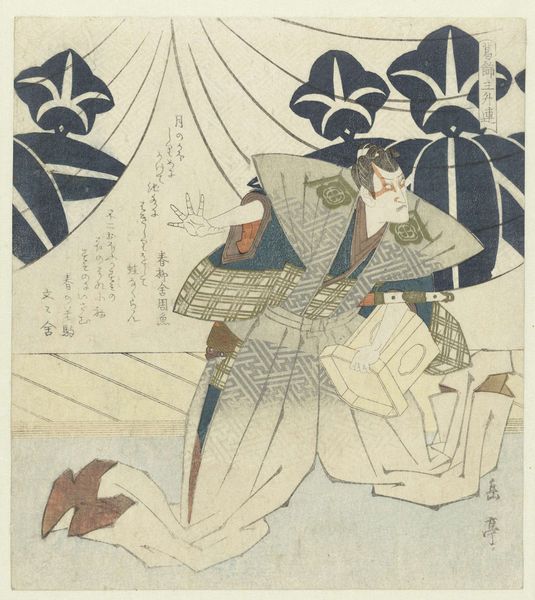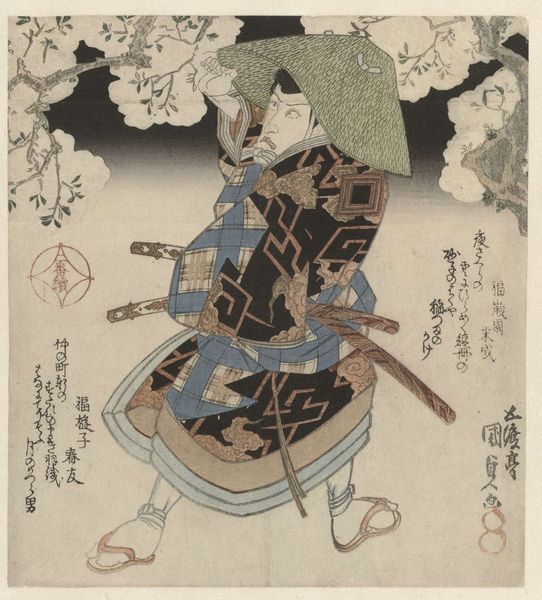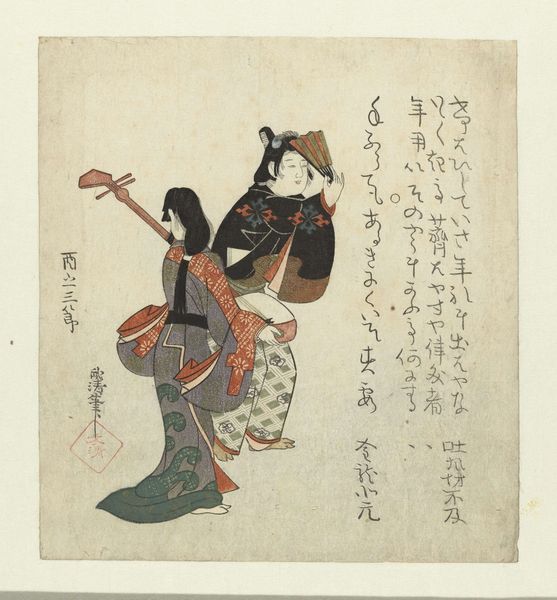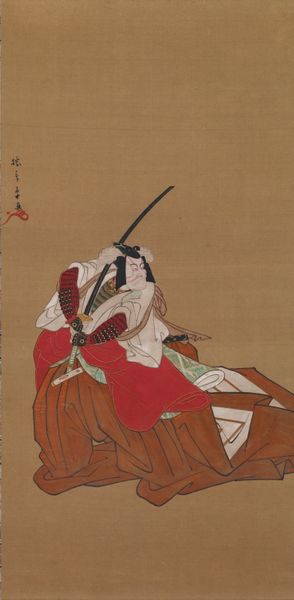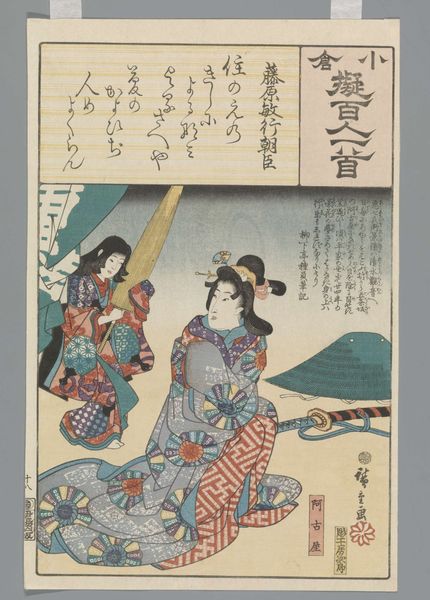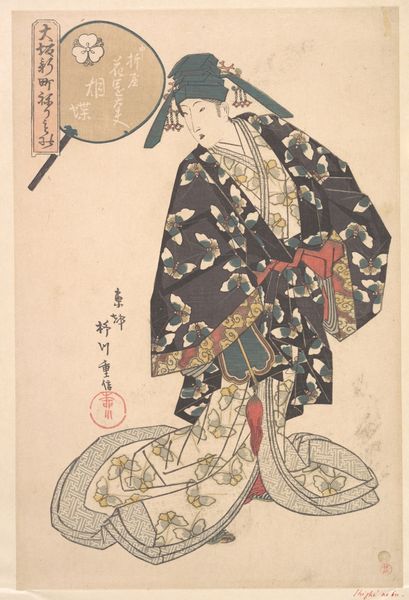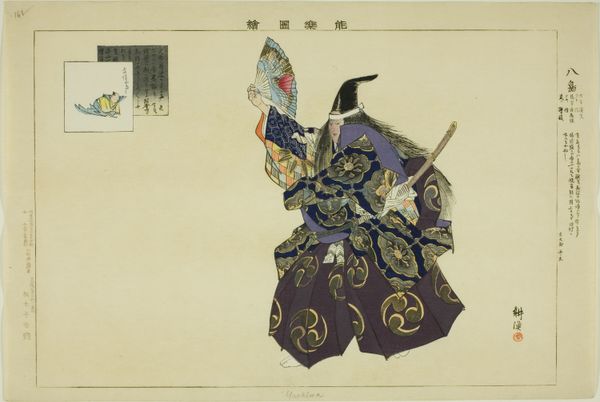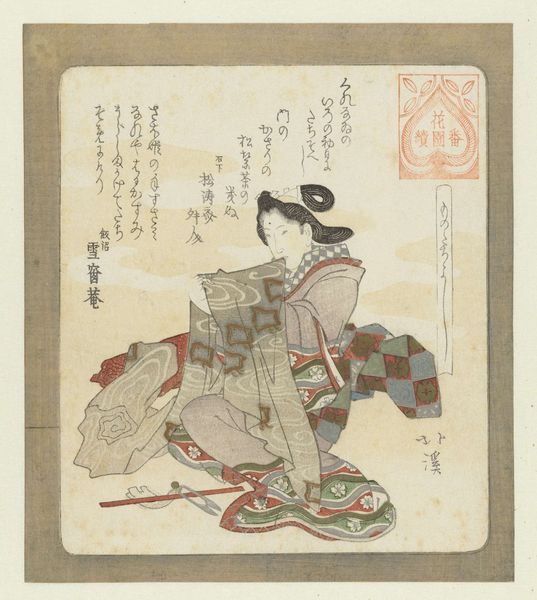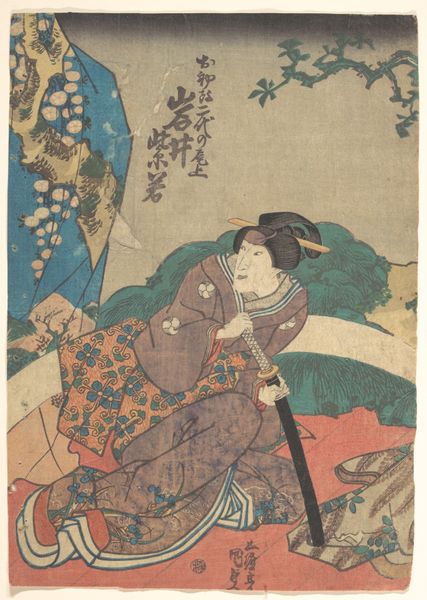
print, woodblock-print
#
portrait
# print
#
asian-art
#
ukiyo-e
#
figuration
#
woodblock-print
Dimensions: height 205 mm, width 177 mm
Copyright: Rijks Museum: Open Domain
Curator: Today we're looking at "Momotarō," a woodblock print crafted by Katsukawa Shuntei in 1821. What strikes you first about this Ukiyo-e work? Editor: There's a certain somber stillness despite the seemingly celebratory elements. The lone figure, seated with that striking text on his kimono...it's heavy, yet refined. Is that a lobster in the background? Curator: Indeed. Let's break down the composition. Shuntei utilizes bold lines and flat planes of color characteristic of Ukiyo-e. Observe how the artist renders form—minimal shading, prioritizing outline and pattern. Notice the considered arrangement of the figure and the prop. The sword's angle, the deliberate placement of the offering... it all guides the eye. Editor: I can't help but consider the symbolic weight of that so-called 'offering.' Lobster often represents longevity and good fortune, but within the context of Momotarō, Japan’s peach boy folk hero, I read defiance, and an indictment of power structures, as well. Momotarō challenges demons—figures who can embody social oppressions, imperial overreach. It prompts one to ask what "fortune" truly means in this fraught political landscape. Curator: An astute interpretation. Still, look at how the white characters contrast with the darker fabric of his garment, creating a compelling graphic element. It’s not just symbolic—it's visually arresting, a prime example of Japanese printmaking’s clever use of color and form. The curve of the sword mirrors that of the lobster’s body—notice how those curves converge. Editor: Form serves meaning. Momotarō's story itself challenges tradition. He springs from a peach, defying conventional birth narratives. In that kimono and sword, this hero’s narrative is intertwined with resistance and demands not only a visual assessment but an analysis of its sociocultural influences and commentary. Curator: It speaks to the power of formal composition shaping how we read the themes. Editor: Agreed. The genius is indeed, how interwoven art is, with intention.
Comments
No comments
Be the first to comment and join the conversation on the ultimate creative platform.
